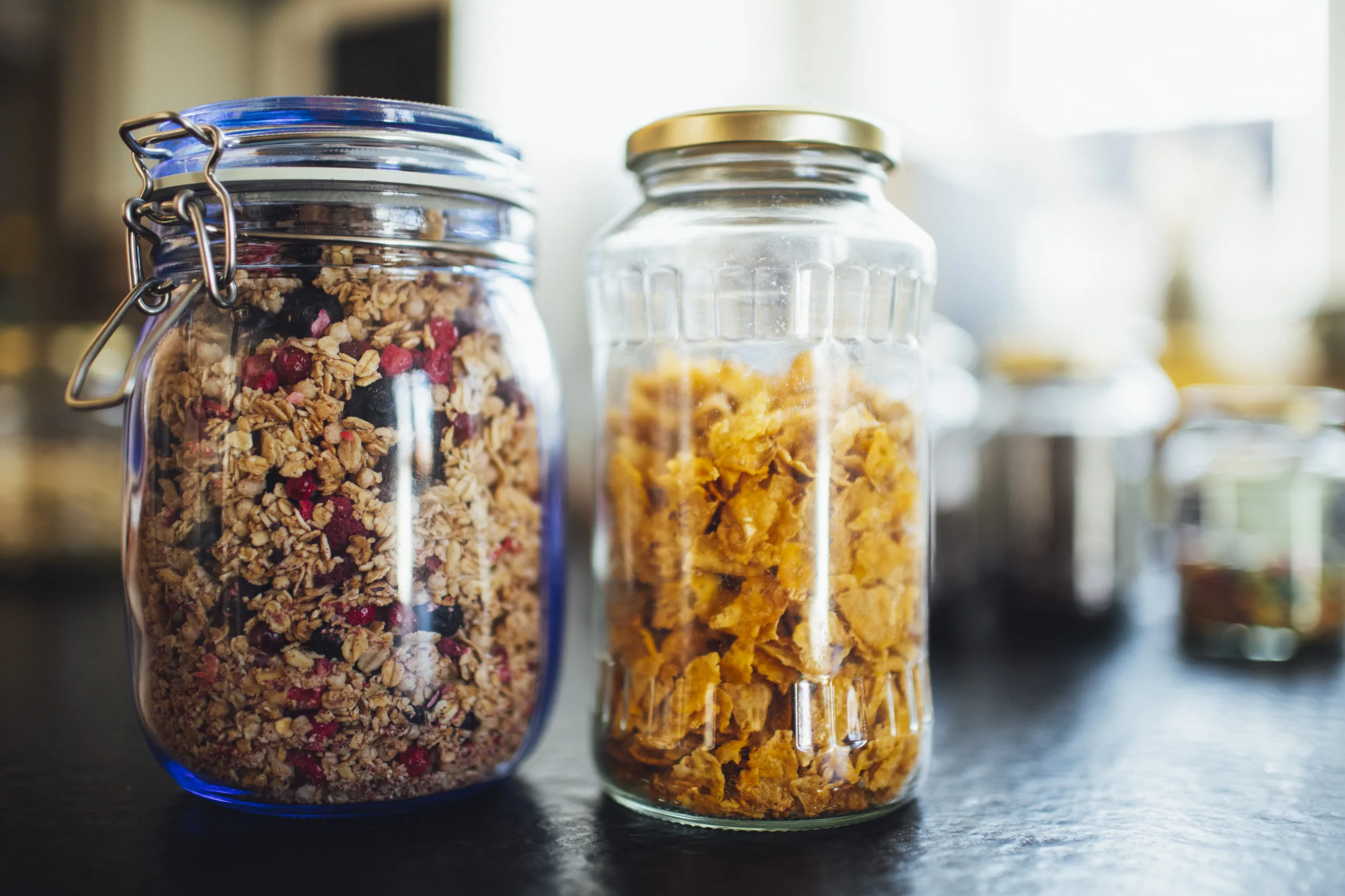Are you struggling with digestive issues? You may have heard of a Low FODMAP diet and wondered if it could be the key to improving your symptoms. A Low FODMAP diet is an increasingly popular nutrition plan designed to reduce symptoms of digestive distress, such as bloating, abdominal pain and gas.
This article will provide a comprehensive guide to implementing a Low FODMAP diet. We’ll discuss which foods are included, how to create a meal plan, and how to make sure you’re getting enough essential nutrients while following the diet. We’ll also address potential risks and drawbacks associated with this type of eating plan. By the end of this article, you should have all the information you need to decide if a Low FODMAP diet is right for you.
A Low FODMAP Diet is a nutritional plan designed to help reduce symptoms of irritable bowel syndrome (IBS) and other digestive disorders. It involves limiting foods high in certain carbohydrates called fermentable oligosaccharides, disaccharides, monosaccharides and polyols (FODMAPs). This diet can be beneficial for people suffering from IBS as it reduces the amount of hard-to-digest carbohydrates that can trigger symptoms such as abdominal pain, bloating, gas, diarrhea and constipation.
The Benefits of a Low FODMAP Diet for IBS Sufferers
IBS, or Irritable Bowel Syndrome, is a common digestive disorder that affects millions of people worldwide. Symptoms can include abdominal pain, bloating, gas, cramping and diarrhea. Many people with IBS find relief with dietary changes and a low FODMAP diet is one of the most effective options.
FODMAP stands for Fermentable Oligosaccharides, Disaccharides, Monosaccharides and Polyols. These are all types of carbohydrates found in many foods that can be difficult for some people to digest. Research has shown that a low FODMAP diet can be effective in reducing symptoms for some people with IBS.
The benefits of a low FODMAP diet include improved digestion and fewer symptoms of IBS. The diet avoids foods known to trigger symptoms such as dairy products, onions, garlic, beans and cruciferous vegetables like broccoli and cauliflower. It also limits foods high in sugar alcohols like sorbitol which can be difficult to digest. This helps to reduce abdominal pain, bloating and gas as well as diarrhea and constipation associated with IBS.
A low FODMAP diet also helps to reduce inflammation in the gut which can contribute to digestive problems. The diet is designed to be followed for several weeks at a time until symptoms improve then reintroducing food groups one by one in order to identify problem foods for an individual person. This allows people with IBS to tailor their diets according to their own specific needs.
Overall, following a low FODMAP diet may help alleviate some of the uncomfortable symptoms associated with IBS such as abdominal pain, bloating and diarrhea. It is important for anyone considering this type of diet to discuss it with their doctor first before making any changes.<
Identifying the Foods to Avoid on a Low FODMAP Diet
A low FODMAP diet is an effective way to reduce symptoms associated with irritable bowel syndrome (IBS). This diet helps to eliminate foods that contain certain types of carbohydrates called FODMAPs. These carbohydrates are difficult for some people to digest, which can cause symptoms like abdominal pain, bloating, and gas. It is important to identify which foods contain FODMAPs so that you can avoid them and help reduce your symptoms.
Click here to preview your posts with PRO themes ››
Some high FODMAP foods include wheat, barley, legumes, onions, garlic, apples, pears, peaches, honey, milk and yogurt. Additionally, some artificial sweeteners such as sorbitol and mannitol can also be high in FODMAPs. It is important to read labels carefully when shopping so that you can identify products that contain these ingredients.
When dining out it can be difficult to determine which foods are low in FODMAPs. To make sure you are eating a low FODMAP meal it is best to ask questions about the ingredients used in the dish and how it was prepared. It is also helpful to look for restaurants that specialize in providing low-FODMAP options or suggest substitutions for high-FODMAP ingredients when ordering from regular menus.
It is also important to remember that some foods may be naturally low in FODMAPs but may contain other ingredients that make them difficult for people with IBS to digest. For example, some fruits such as oranges and bananas are generally considered low-FODMAP but they may still cause bloating if they are not properly prepared or consumed in large quantities.
By identifying which foods contain high levels of FODMAPs and avoiding them when possible, you can reduce your risk of experiencing uncomfortable digestive symptoms associated with IBS. With a little bit of research and preparation it is possible to find delicious dishes that will help keep your IBS symptoms under control while allowing you to enjoy meals with family and friends.
How to Eat Out While Following a Low FODMAP Diet
Eating out can be a tricky endeavor for those following a low FODMAP diet. Many restaurants offer dishes that are high in FODMAPs, which can lead to uncomfortable and embarrassing digestive symptoms. However, with some simple tips and tricks, you can find delicious low FODMAP options at any eatery.
The first step is to arm yourself with knowledge. Before heading out for dinner, research the restaurant’s menu online and familiarize yourself with the ingredients used in each dish. This will help you narrow down your choices and make it easier to spot high-FODMAP ingredients when you arrive.
Once at the restaurant, don’t be afraid to ask questions! It’s important that you don’t hesitate to inquire about certain ingredients or cooking methods. For example, if a dish contains garlic or onion powder, inquire whether it was cooked with fresh garlic or onion instead. Similarly, if a sauce contains wheat or barley-based ingredients (such as soy sauce), let your server know that you need a gluten-free option.
When ordering your meal, stick to dishes made with simple ingredients like grilled meats and vegetables. Avoid cream-based sauces and soups as these are often high in FODMAPs as well. Salads can also be tricky – bypass pre-made dressings and opt for an oil-vinegar dressing instead.
Finally, don’t forget about dessert! Many restaurants have low FODMAP options available such as gluten-free cookies or sorbet – just make sure to double check the list of ingredients before indulging!
With these tips in mind, eating out while following a low FODMAP diet doesn’t have to be daunting! With some research ahead of time and communication with servers during your meal, you can easily find delicious options that fit within your dietary needs.
Click here to preview your posts with PRO themes ››
How to Transition to a Low FODMAP Diet Safely
Making the switch to a low FODMAP diet can be a daunting task, but it doesn’t have to be. With some preparation and planning, you can make the transition smooth and safe. Here are some tips on how to transition to a low FODMAP diet safely.
The first step is to educate yourself on what foods and ingredients are considered low FODMAP. You should also consult with your doctor or nutritionist if you have any questions or concerns about beginning the diet. Once you’re familiar with what foods are low FODMAP, begin by slowly introducing them into your regular meals. This will help your body adjust more easily and reduce any digestive discomfort that may occur as you transition into the new diet.
It’s also important to keep track of which foods cause any digestive issues and how your body reacts after eating them. This will help you identify which ones may need to be avoided in the future. Additionally, make sure to drink plenty of water throughout the day, as it helps flush out toxins from your system that can aggravate digestive discomfort.
Lastly, be sure to talk with your doctor or nutritionist about any supplements you may need while transitioning into a low FODMAP diet. They can provide advice on which vitamins and minerals are lacking in the new diet and advise on appropriate supplements that will ensure you get all the required nutrients for optimal health.

Replacing High FODMAP Foods with Lower Alternatives
Eating a low FODMAP diet can be challenging, as many common foods contain high amounts of FODMAPs. Fortunately, there are a variety of low FODMAP alternatives that can be used as substitutes for high-FODMAP foods. Dairy is one of the main sources of high FODMAPs, so swapping cow’s milk for lactose-free milk or almond milk is a great option. Additionally, rice and quinoa are lower in FODMAPs than wheat and barley. Vegetables such as zucchini, eggplant, and carrots are generally tolerated better than onions and garlic. Furthermore, fruits like bananas, blueberries and oranges are lower in FODMAPs than apples and pears.
Replacing high-FODMAP ingredients with lower alternatives can help reduce digestive symptoms caused by FODMAP intolerance. For example, swapping out wheat flour for almond or coconut flour when baking is an easy way to reduce the amount of FODMAPs consumed in baked goods. Additionally, processed meats such as sausages often contain high-FODMAP ingredients like onions and garlic that can be replaced with herbs and spices for a more flavorful meal without the added FODMAPs.
When shopping for groceries, it is important to read ingredient labels carefully to ensure no high-FODMAP ingredients have been added to a product. This will help to identify any potential sources of hidden FODMAPs that could cause digestive issues. By replacing some higher-FODMAP foods with lower alternatives when possible, those following a low FOMDAP diet can enjoy meals without experiencing uncomfortable digestive symptoms afterwards.
Tips for Managing IBS Symptoms While on a Low FODMAP Diet
IBS, or Irritable Bowel Syndrome, is a common digestive disorder that affects millions of people worldwide. It is often characterized by abdominal pain, bloating, constipation and diarrhea. Fortunately, there are ways to manage IBS symptoms through diet and lifestyle changes. One such approach is the low FODMAP diet. This diet eliminates certain types of carbohydrates that can trigger IBS symptoms. Here are some tips for managing IBS symptoms while on a low FODMAP diet:
Click here to preview your posts with PRO themes ››
1. Start slowly: It’s important to start out slowly when transitioning to a low FODMAP diet. Eliminating all high FODMAP foods at once can cause uncomfortable withdrawal symptoms such as headaches and fatigue. Start by reducing your intake of high FODMAP foods one at a time until you reach the desired level of restriction.
2. Increase fiber intake: Increasing fiber intake is important for managing IBS symptoms while on a low FODMAP diet. Fiber helps keep the digestive system running smoothly and helps reduce bloating, constipation, and diarrhea caused by IBS.
3. Stay hydrated: Staying hydrated is essential for managing IBS symptoms while on a low FODMAP diet. Water helps keep the intestines lubricated and flushes out toxins from the body that can worsen IBS symptoms.
4. Exercise regularly: Exercise can help reduce stress levels which can in turn help reduce IBS symptoms such as abdominal pain and bloating caused by stress.
5. Get plenty of sleep: Sleep deprivation has been linked to increased levels of inflammation in the body which can worsen IBS symptoms such as abdominal pain and diarrhea.
Following these tips can help you manage your IBS symptoms while on a low FODMAP diet and lead to an overall healthier lifestyle!
Nutrients and Supplements for IBS Patients on a Low FODMAP Diet
IBS patients often find that following a low FODMAP diet can help to relieve their symptoms. However, while they are eliminating certain foods from their diets, it is important to make sure that they are still getting the nutrition they need. Nutrients and supplements can help IBS patients make sure they are getting all the vitamins and minerals they need.
Some of the most important nutrients for IBS patients include magnesium, vitamin D, omega-3 fatty acids, probiotics and prebiotics. Magnesium helps maintain regular bowel movements, vitamin D helps boost the immune system and omega-3 fatty acids help reduce inflammation. Probiotics and prebiotics can help improve gut health.
IBS patients should also be sure to get enough fiber in their diets. Fiber helps keep digestion regular and can also help with constipation. High-fiber foods such as legumes, whole grains and fruits are good sources of fiber.
In addition to these nutrients, there are also some supplements that may be beneficial for IBS patients on a low FODMAP diet. These include L-glutamine, which can help reduce inflammation; ginger, which can help with nausea; peppermint oil capsules, which can reduce abdominal pain; turmeric, which has anti-inflammatory properties; and probiotics, which can improve digestive health.
It is important to remember that everyone’s nutritional needs are different and it is always best to talk to your doctor or dietitian before taking any supplements or making any drastic changes to your diet. With the right combination of nutrients and supplements, IBS patients on a low FODMAP diet can make sure they are getting all the nutrition they need without aggravating their symptoms.

Conclusion
Implementing a low FODMAP diet can be an effective way to reduce symptoms of irritable bowel syndrome, celiac disease, and other digestive issues. It is important to work closely with a qualified healthcare provider or dietitian to ensure that the diet is implemented correctly and tailored to your individual needs. Additionally, it is important to take time to learn about the dietary restrictions involved and identify safe food options.
Adopting a low FODMAP diet may seem daunting at first, but with the right support and guidance, it can be done successfully. Eliminating certain foods can also offer an opportunity to explore new foods, cooking methods, and recipes. Eating a well-balanced diet that fits your individual needs can help you reduce symptoms and improve your overall health and wellbeing.
In summary, implementing a low FODMAP diet requires careful planning and professional guidance. It can provide great relief from digestive symptoms while helping you learn more about the foods you eat and how they may affect your health.

